Guest post by Beth Kanter, Read her blog | Follow her on Twitter
I am an early adopter of social media and set up my listening post 5 years ago to scan for people, trends, and ideas related to social media and nonprofits. Listening and engaging with people has been critical to any success I’ve achieved as a social media practitioner – whether I’m blogging or fundraising for Cambodian children. For the past five years, I’ve been teaching social media workshops for nonprofits and lately doing deeper dives on the techniques of listening both for nonprofits and in my role as Visiting Scholar in Residence at the Packard Foundation.
This is a four-part series about listening for nonprofit organizations summarizes the insights I’ve learned about listening.
Part 1: Listening ROI
Part 2: Listening Literacy Skills
Part 3: Listening Tools: A Starter Kit
Part 4: Listening Case Study: The Red Cross
Listening Literacy for Nonprofits Part 1: Why Listening Is Valuable
A Simple Definition: Listening
Listening is knowing what is being said online about your nonprofit organization, field or issue area. Listening uses monitoring and tracking tools to identify conversations that are taking place on the social web. It is a prelude to engaging with your audience. At its very basic, listening is simply naturalistic research, although more like a focus group or observation than a survey.
Listening is not simply scanning a river of noise. The process involves sifting through online conversations, from social networks to blogs — many voices talking in many places. The value of listening comes from making sense of the data and using it to inform your social media strategy.
Understanding the Value of Listening and Engaging
The value of listening is more than “free market research,” although listening through social media channels is priceless because you can hear what people are saying in their natural environment. Listening is typically used by nonprofits to help improve programs and identify misconceptions. http://beth.typepad.com/beths_blog/2009/01/nonprofit-examples-of-how-listening-returns-valuable-insights-and-impact-.html As one nonprofit social media strategist pointed out, “Paying attention to trends on the various networks and what people are saying is beneficial because it makes it easier for your organization to be relevant. Listening helps you be less of a spammer and more of a service provider.”
Network for Good has some terrific stories about noisy, angry people becoming champions for their services with active listening and then open engagement on social networks or in the comments of blogs. Kate Bladow who works for LawHelp, a legal services nonprofit, says that listening has become a best practice for all program management staff. She says, “I found out this week that a colleague and I both use the same keywords on “legal aid” and “pro bono” to listen because we want to know if anyone is reaching out and looking for legal aid.” She directs people to the specific place on the organization’s web site to find legal information. Kate also listens to identify people who express an interest in taking on pro bono legal work and recruits them as pro bono lawyers.
Gulf Coast Regional Blood Center is listening by searching for discussions about blood donations in their local area. Courtney Martin, social media manager, points out “We’ve been able to answer questions for people who want to donate blood but don’t know the rules, or who have misconceptions. Most importantly, the initial listening and engaging step is not as time consuming after you establish a routine.”
Becoming A Listening Organization
Is listening time consuming? It depends on how your organization structures the listening tasks and work flow. Will one staff person (or volunteer) in the organization do all the work or will it be many? Who will respond to what and how? Finally, it isn’t a matter of just collecting the data, someone will need to transform it from a river of noise into insights – and this takes a particular skill, pattern analysis.
Nonprofit use different approaches depending on their size, the scope of their listening, and skill/experience of staff 1.
– Social Media Strategist As Professional Listener: One person becomes the organization’s ears and monitors the web, does the tracking and reporting. This works well when there is less volume, but the organization wants to scale its engagement strategy listening will require more than one set of ears.
– Listening Team: Some organizations use this approach when they do not have a one person on staff posses both the technical skills and social media communications savvy. Or they form a cross-department team comprised of individuals from programming, fundraising, and marketing to shared the task, thus helping to break down silos.
– The Listening Organization: This is a bold step and not many nonprofits have taken it. A listening organization encourages everyone within the organization, both staff and stakeholders to listen and participate on the social web. This requires a policy and operation guidelines.
Now that your organization appreciates the value of listening and understands how to organization the work flow, it’s time to understand the listening skills and techniques.
How does your nonprofit organize its listening activities? How does your organization get value from listening?

Credit
Part 2: Listening Skills
Far more important than our choice of tools for the listening task, are your listening literacy skills. These include composing and refining keywords, pattern analysis, and synthesis of findings. There’s also a fourth skill: Effectively engaging. Listening is not just quietly observing, sooner or later you need to interact with people and build relationships. Working out when and how to respond is an important technique that needs to be mastered.
At the very least, nonprofits organizations that want to do effective listening should set up searches on the basics. Some refer to this as “ego searches.” These may be obvious, but it also helps to have them listed and even better to create a one-pager and get input from other staff members.
– Nonprofit Name
– Other nonprofit names in your space
– Program, services, and event names
– CEO or well-known personalities associated with your organization
– Other nonprofits with similar program names
– Your brand or tagline
– URLs for your blog, web site, online community
– Industry terms or other phrases
Setting up a basic listening post and honing your listening skill is a great way to begin exploring the world of social media. As a nonprofit organization begins to listen on a regular basis, it is a good idea keep a spreadsheet of phrases or words that people actually use to describe the nonprofit organization. It provides a reality check and avoids assuming that the audiences uses the same words as the nonprofits’ staff.
Carie Lewis, Social Networking Manager for the Humane Society of United States suggests keyword searches on current issues that people are talking about as well as the issues your organization is working on. She adds, “Don’t forget to search the names of individuals who oppose your issues.”
Danielle Brigida, National Wildlife Federation adds “It is important to listen to people based on their interests. For example, I create twitter searches for the phrase ‘kids outside’ which is related to our program Green Hour and is about encouraging parents to have their children spend more time outside enjoying nature. I compliment parents.”
Another valuable source of keywords is to run a search engine referral report (the words that people type into Google or other search engine to find an organization’s web site). Analyze the keywords that people are using to tag or identify the organization’s web content or blog posts in social bookmarking sites like delicious or Stumble Upon. Apollo Gonzales, Social Media Campaign Manager for NDRC, conducted an analysis of keywords used to tag his organization’s blog posts on environmental issues and was able to identify a lexicon of words used by people pro or against the issue. This helped NDRC hone their social media keyword searches.
Finally, as Wendy Harman, Social Media Strategist for the Red Cross advises, “You may not know what is not worth searching until you try searching on it and revise it based on what you see. Don’t assume that you’ll get it right on the first try, either. It takes fine-tuning of those key words before you get it right.”
What key words do you use? What’s your participation policy?
Now that your organization has mastered the skills, it is time to take a look at the tool box.
Part 3: Listening Tools: A Starter Kit
There are free and paid monitoring tools available to support listening through social media channels. To make your scanning efficient, you’ll a RSS Reader, software that grabs fresh content from blog posts, web posts, Twitter, and other sources. Most RSS readers, like Google Reader, are free.
Many nonprofits like Google Reader, especially those who are working as a team because it makes it easy to share items without cluttering up email.
For additional tutorials and tips on using RSS Readers, see the NTEN’s WeAreMedia ToolBox.
Listening tools consist of monitoring, tracking, and analytics software. Here is a good starter kit using free tools.
Google Alerts: Google Alerts are email updates of the latest relevant Google results (web, news, etc.) based on a keyword query or topic. The results can be emailed or read in an RSS reader. At the very minimum, your organization should be listening with a Google alert.
Technorati: Technorati is blog search engine. It searches by keyword or links for mentions on blogs. Technorati makes it easy to figure out if an influential blogger, someone who is linked to by many others, has mentioned a nonprofit organization or its issue area.
Social Mention: Social Mention searches for keywords or URLS on many different social media sites, including blogs, podcasts, video, social networking sites, online discussion boards, micro blogging, and more. It also provides graphic illustrations or charts showing mentions per day or week.
Twitter Search: Twitter’s search function is one of the most valuable ways to use it. Listening on Twitter is like being able to read people’s thoughts. It can also give your organization the ability overhear conversations.
The Smithsonian Museum is currently undertaking a strategic planning process that is using a variety of social media channels to listen to and engage with its audience . Nina Simon, in a talk she gave at the Smithsonian in May, 2009, illustrates how searching on the phrase “Smithsonian” resulted in a rich stream of insights about how Smithsonian’s visitors feel about the institution as well as how they plan their museum visit. All valuable information that can be used to design a web presence.
BoardReader: BoardReader finds and displays information posted on the online discussion forums and message boards.
When Apollo Gonzales, NRDC’s Netroots Campaign Manager, was in the listening phase for a campaign to support a bill before Congress that would mandate stricter fuel-economy standards, they targeted Toyota Prius owners and fans known as “Hypermilers” who obsess about their green hybrid cards. Gonzales thought that this group of hard-core fans might be interested to know that the manufacturer of their car was opposing the bill. Maybe, this group of fuel efficiency lovers would do something about it. Using a tool like BoardReader, helped Gonzales hone in the multiple conversations happening across different online discussion boards and to quickly identify influencers.
BackType: BackType is a search engine that will search through blog comments, social networks, and Twitter to identify. In addition, BackType has the ability track conversations on a specific blog post.
Many nonprofits begin listening using free tools and as appropriate migrate to professional or fee-based listening tools when the volume of mentions is too large for one person to summarize. Professional tools can also help automate the listening reporting by avoiding tedious cut and pasting. Services start out at free trial for a month and shoot up over thousands of dollars for large institutions with multiple users. Some vendors, like Radian 6, are offering special nonprofit pricing.
The number of professional listening tools has grown rapidly over the past year and will continue to grow as more companies adopt social media and begin with listening. When the nonprofit’s listening activities have become established and the need for professional software becomes obvious, the social media team needs to decide if they want software for tracking conversations or if want to hire a consultant to do the tracking and provide a report. The difference is a trade off between the time required for the DIY approach or the cost of hiring a consultant.
Remember, it is important to remember that the skills – composing keywords – are the same for both free and paid tools. When considering a paid service, nonprofits should do their due diligence for the different vendors and select the one that best matches their needs.
What’s in your nonprofit social media listening tool box? What’s your killer tip on how to use these listening tools?
Part 4: Listening the Gateway Drug: Red Cross Case Study
The American Red Cross initiated its social media strategy shortly after Hurricane Katrina in 2006. The organization knew there were negative blog posts about its disaster relief efforts, but had no capacity to respond, let alone track.. They hired Wendy Harman, a social media integrator, to “combat” bloggers and to increase organizational transparency. “It felt like we were going to war. There were concerns about negative comments, fear even,” says Wendy whose current title is Social Media Manager.
Her first task was to identify and follow the existing conversations. “There were hundreds of mentions across social media platforms each day. I had to set up a listening post to monitor and analyze them as well as figure out how or if to respond.”
The American Red Cross started a listening program with some key goals: correct misinformation, to be informed about public opinion, to track conversation trends, to identify influencers, and to build relationships. Wendy Harman notes, “We needed to listen and engage first before we could do anything successfully with social media.”
Listening to bloggers initially, and later on Twitter and other sources, has helped informed communications strategies. Says Harman, “People were blogging about their blood donation experience and sharing intimate details of the experience –like the type of cookie they got afterwards. These conversations inform advertising and outreach to increase blood donations, which of course is one metric for success.”
What surprised the staff at the American Red Cross and even Wendy herself, was the majority of these conversations were positive. Notes Harman, “We found that most are passionate and positive and want to help. Social media offers us a way to engage them and tell their stories about their experience with us to others.”
Perhaps the biggest benefit that the Red Cross reaped from its listening efforts is that drove internal adoption of social media. Wendy says people are no longer afraid of negative comments or posts. “The opposite of hate is indifference, if someone bothers to post a negative comment it means they care.” Negative comments are now viewed by the organization as an opportunity to educate and improve what they are doing.
What started in 2007 as a series of listening and engaging experiments has now begun to pay off. In December 2008, thousands of Facebook members helped leveraged a $50,000 donation from the Western Union Foundation by voting for the American Red Cross and its disaster relief efforts on Facebook. The $50,000 donation contributed to a broader American Red Cross goal to raise $100 million for disaster relief.
Wendy Harman noted that employees at the Red Cross were initially blocked from accessing social networking sites, like Facebook, from work. Recently, a change in policy has allowed access, in part, due to the listening work undertaken with Harman’s leadership.
Harman spends approximately 10 hours per week listening. “In the beginning it took a little bit longer because I had a learning curve.” Harman compiles daily mentions on blogs into a one-page update that is distributed to staff and affiliates. She notes, “It isn’t rocket science, just keyword searches across social media platforms.”
As the professional listener on the Red Cross staff, her main challenge is dealing with the tsunami of information to analyze and she has now incorporated Radian 6 into her toolbox. “The professional tools get rid of a lot of cut and pasting, so that has helped. Also, we’re looking at ways to represent the information visually. For example, I’ve bookmarked posts about people talking about the Red Cross and ran it through wordle.com, a tool that creates a visual tag cloud.”
The American Red Cross has also established a response policy for commenting on blogs or replying on Twitter. Says Harman, “I organize the report by subject matter and if I need help answering I consult with others on staff. This approach generally keeps everyone abreast of what people are saying about the Red Cross in the social space.”
Wendy uses the authority ranking from Technorati to help guide whether or not they should comment on a blog. As Wendy notes, “Authority matters but is not everything. Sometimes most compelling story or most pressing issue comes from social media user with little influence.”
Harman says that responses fall into several categories. These include: relationship building (someone is saying something nice about us and we say thank you) or there is a customer service issue or perception that needs to addressed. Harman also reviews reports over time to look at different. These insights not only fuels their social media strategy, but also inform program design, fundraising, communications, and virtually the entire organization.
Wendy says that it is really important to document anecdotal evidence when making the case for the ROI of Social Media, especially feedback from staff members about how the listening process supports their work. She also documents how external stakeholders have engaged with the Red Cross literally sharing screen captures of the actual tweet or blog comment. This drives adoption.
Over time, the organization has come to appreciate and value the listening reports. And, the Red Cross community now knows that the organization is listening and the conversation has changed, relationships deepened. Most recently, engagement has also led to dollars. In May 2009, the Red Cross was one of ten organizations selected by Target to participate in a Facebook competition where supporters voted for a share of the corporate philanthropy budget of $3 million. The Red Cross was able to leverage a donation of $750,000.
As Wendy Harman sums it up, “Social media listening has become the gateway drug of the organization.”
Has listening become a gateway drug in your nonprofit organization? If so, how?
If you’re interested in going deeper, visit my personal learning space about Social Media Listening for Nonprofits.
Bio:
Beth is the author of Beth’s Blog: How Nonprofits Can Use Social Media (http://beth.typepad.com), one of the longest running and most popular blogs for nonprofits. She is a frequent technology trainer and speaker and in 2009, she was named by Fast Company Magazine as one of the most influential women in technology and one of Business Week’s “Voices of Innovation for Social Media.”
She is the 2009 Visiting Scholar in Residence for Social Media and Nonprofits for the Packard Foundation. A frequent contributor to many nonprofit technology web sites,blogs, and magazines, Beth has authored chapters in several books, including the ROI chapter in “Managing Technology to Meet Your Mission: A Strategic Guide for Nonprofit Leaders,” edited by NTEN published in 2009. She is currently co-writing a book with Allison Fine to be published by Wiley in 2010 called “The Networked Nonprofit.”
You can read Beth’s complete biography here.
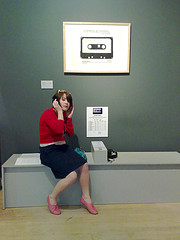

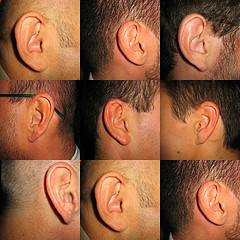

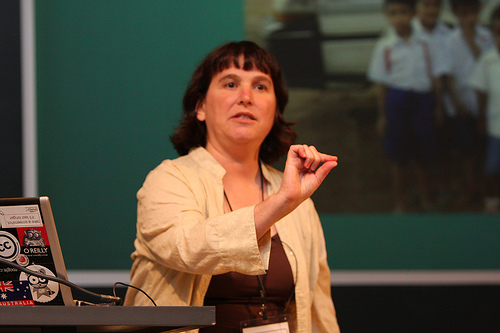

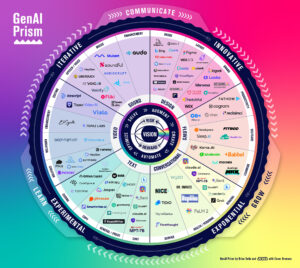
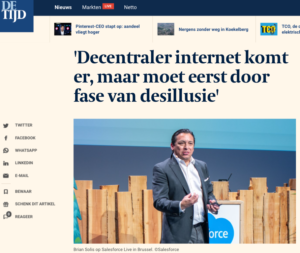


Great post with valuable reference to tools, cases, and approach. I would only add that having a set of criteria for evaluating or scoring what you hear–good, bad, indifferent–is also a critical part of the listening process.
Your comment gave proper attribution to Beth Kanter who authored this guest post on BrianSolis.com
Fabulous post, Beth. At Resource Media, we do a lot of digital media scans for our non-profit partners. Thanks for the tips and tools to help us toward this work. As we all become better listeners thanks to posts like yours, we can then turn our attention on how to put all this great data to use.
RT @kanter Listening Literacy for Nonprofits post on @briansoli http://bit.ly/3DBwpq #comment
Small business owners are go-getters. You’ve done what you had to do to get you to this place in your business. You know what you want and, if it’s important for the growth of your company, you figure out a way to get it. In today’s technology-driven world, you know that a fabulous web presence is a necessity for your company. What do you see when you imagine that great web site? Call the professionals at a small business web design company, and they’ll create the web site you want and need. Small business web design professionals will listen to you, because you are the only one who can tell them what you want.Picture this: You want to update something on your company’s web site and make a few changes. While you’re at it, you decide you need a few more web pages. Instead of calling tech support, you log into your account and make the changes. The pages you have added are automatically formatted to match the rest of your site. Sound like a dream? Well, it’s a dream-come-true with small business web design. After the small business web design professionals have custom built your web site, it will be a do it yourself web site – easy to use, easy to edit, and easy on the checkbook.As a non profit organization, you do what you do for the love of what you do. And although you aren’t exactly a business, you need many of the same things that small businesses need. One of those things is a web site so that likeminded people can find you quickly and easily. Because your time is incredibly valuable, you need an easy web site for non profits. Instead of having to spend hours trying to figure out a web site and keeping it updated, imagine editing and changing it as easily as if you were typing an email. Awebsite for non profits is powerful, fast, and custom made with the all the features you want. Don’t make it so hard: a web site for non profits is easy.